Everyone seems to be making a killing online, and there’s no shortage of money available, so how do you get some of it to flow your way? Find out what some of the best online business ideas with high-profit margins are here.
I get it. Starting an online business is daunting. Even deciding what to do can stump most people, never mind understanding how to do it.
The biggest myth surrounding online businesses is that you need a load of costly equipment, software, or inventory to get started. I say nonsense! What you really need is time and effort.
If you’re willing to put the work in, there are loads of online business ideas that can be highly lucrative and, better still, have little to no startup costs.
So, if you want to make money online, read on to discover my top recommendations for starting an online business.
TL;DR: There are many great ideas for online businesses that yield lucrative results if you’re willing to put the work in. Here are my top recommendations for 2025:
- Create online courses
- Blogging and affiliate marketing
- Start an Etsy digital store
- Become a freelancer
- Design for print on demand
- Create YouTube Shorts and Facebook Reels
- Be a social media manager
- Become a virtual assistant
8 Low-Cost Online Business Ideas with High-Profit Margins
1. Create Online Courses

One of the most in-demand online products right now is online courses. There are courses for just about anything from gardening, pet care, creating writing, and learning guitar to basic car mechanics, earning passive income, and even dressing well.
If you have a skill or know a lot about a particular subject, you can monetize it by creating a course to sell online. This can be anything from a simple E-book to full courses with video content and live support.
Even better is that once you have built your course, you can sell it an infinite number of times so it can become a great source of passive income.
Pros and Cons of Creating Online Courses
Pros
- It can be easy to create content for online courses
- It doesn’t require any fancy equipment
- Courses are in high demand
- You can set your own prices and sell an infinite number of times
Cons
- You need a course hosting platform that costs money (some are expensive)
- You need to generate traffic to your course, which involves building up a contact list of paying for advertising
How to Get Started With Online Courses
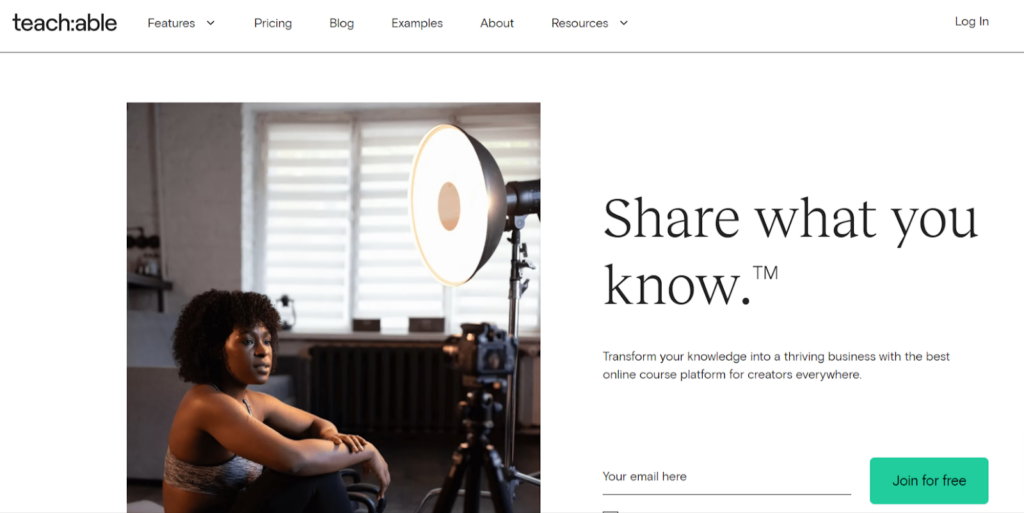
Great courses begin with a great idea, so choose a topic skill you’re knowledgeable about and think about how you can put it into a learnable format.
Create your course material, whether it’s documents, videos, or audio files; start building the material and think about how you will present it.
Research course hosting platforms to find which is best for your needs. Here are a few I recommend:
Finally, create a strategy for getting your course in front of your target audience. This could be through paid advertising or building a social media presence.
A good way to build an audience for free is to start a Facebook group, Instagram, or TikTok profile and regularly post tips and advice within your course niche.
2. Blogging and Affiliate Marketing

The old favorite, blogging, is still a highly popular way to make money online. And these days, you can get an affiliate link for just about any type of product or business.
If you love writing, then this can be a great way to set up a business. But be aware that blogs take a while to gain traction, so this isn’t a quick way to make money.
Once your blog does get noticed, and people start clicking on your affiliate links, it becomes an easy source of income and can be lucrative if you choose the right affiliate partners.
Pros and Cons of Blogging and Affiliate Marketing
Pros
- Even beginners can create a website with ease
- Simple to set up and run
- Allows you to earn money by writing about subjects you’re passionate about
- Once you have published a blog post, any income gained from it is passive
Cons
- You need to understand and use SEO for your blog to be seen
- It can be a slow way to make money – especially when just starting out
How to Get Started With a Blog and Affiliate Marketing
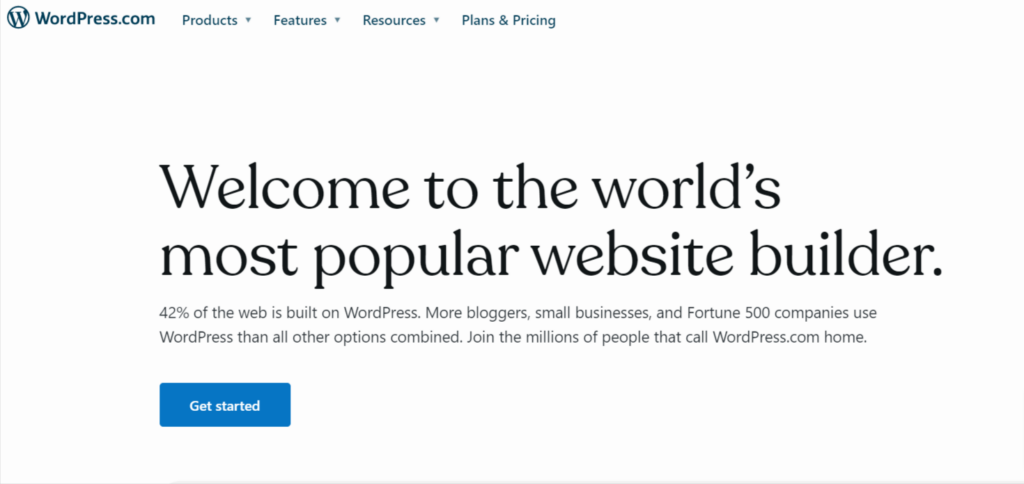
To have a blog, you need a website, and there’s none better than WordPress for creating a blog. WordPress was built for bloggers and search engines like it, so it’s SEO-friendly.
Secondly, you must pick a niche you’re passionate about. Zero in on a specific subject, as this will help your target audience see you. For example, don’t write a blog about photography; write a blog about a specific type of photography – underwater, nature, sport, etc.
Now, start writing blog articles. You’ll need to master SEO as you go, although there are paid tools you can use to help you, such as Mangools and WriterZen.
Next, pick your affiliate link partners. They must be directly related to your blog niche. Add these to your content in a relevant and constructive way so people are prompted to click on them.
Finally, keep producing blog articles. The more you write, the more you will be seen.
3. Set Up an Etsy Digital Store
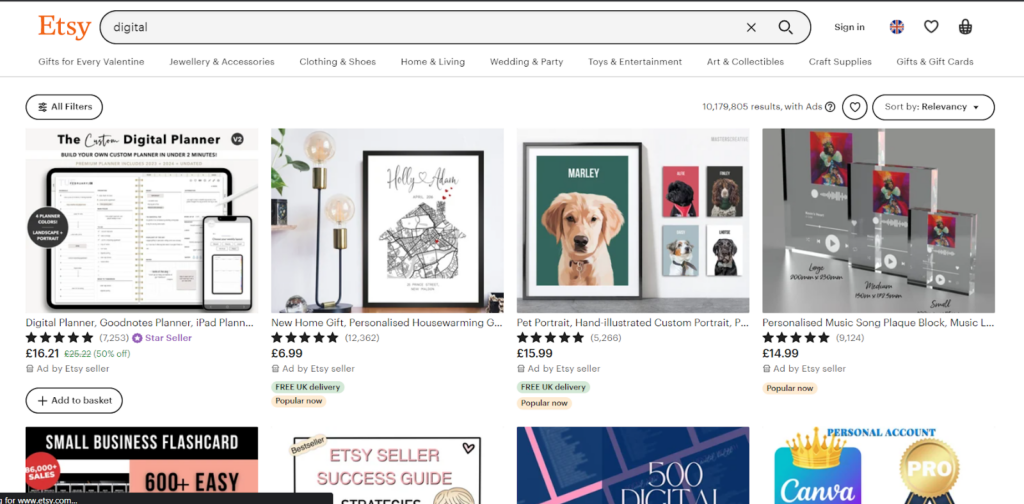
There’s no doubt that Etsy is massive, and it has the traffic to make opening a store worthwhile. Even though the competition is fierce there, if you take the time to set your shop up properly and you have good products, you will see results.
While Etsy is known for selling handmade and artisan items, it’s actually one of the biggest e-commerce platforms for digital products.
And unlike physical products, digital items don’t require inventory or any upfront costs to create, making them an excellent option for a low-cost online business.
Here are a few suggestions for digital items you can sell on Etsy:
- Charts and planners
- Financial planning spreadsheets
- Templates (for example PowerPoint, Excel, Notion.so)
- Printable art, stickers, and graphics
- SVG and PNG image files
- Printable signs, invitations, and stationary
- Printable partyware, games, coloring pages, and so much more!
Pros and Cons of a Digital Etsy Shop
Pros
- You can open an Etsy shop for free
- Requires very little upfront investment
- After creating your products, you can sell them infinitely
- Etsy has high traffic, so you won’t have to advertise
Cons
- To get your listings seen, you need to get Etsy’s SEO right, and that can take some work
- It can be tough to find a profitable niche
- Etsy takes a cut of your profits (in total, it accounts for around 20%)
- Check out some of the best Etsy competitors here
How to Get Started With a Digital Etsy Store

First, you need to research what types of digital products will sell on Etsy. Everbee is an excellent tool for this, and you can use it on a limited basis for free.
SalesSamurai is also a good source for discovering profitable products, as is Marmalead, so take advantage of their free trials to find things to sell.
As a side note, these tools are also excellent for Etsy SEO (although you do have to pay to use them after the initial free trial).
Next, create your products! The software you choose depends on what you’re making. Here are some ideas:
- If you’re making document-based products and printables, I recommend Canva Pro (my review here). Plus, it can be used for free
- Inkscape is a great free tool for SVG files
- Procreate, or Photoshop, is perfect for digital art and printables
- GoogleDocs is an ideal app for creating documents and spreadsheets
Finally, open your Etsy store and load it with product listings, and you’re set to go.
Remember, take the time to get your SEO on-point and regularly upload new products, and your shop will likely do well.
4. Become a Freelancer
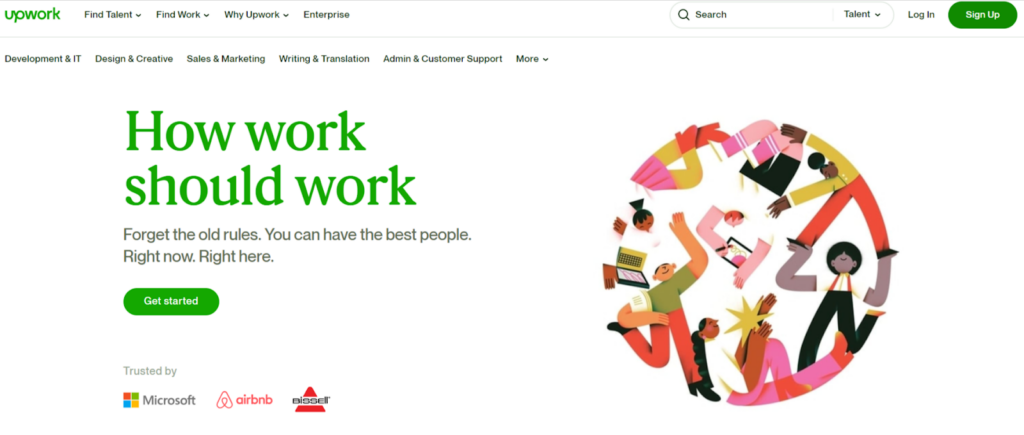
Any skill that you can perform online can be freelanced out to clients. For example, content writing, accounting, coding, illustration, marketing, and much more are all desirable skills people will willingly pay for.
Best of all, setting up as a freelancer costs nothing, and you can set your rates and charge what you want.
You also have plenty of options to market yourself. You can either use a freelancing platform or set up a free website (or do both). Setting up a Facebook business page and a LinkedIn profile will also get you seen.
Pros and Cons of Freelancing
Pros
- Easily sell a skill you already have with little to no investment
- There are plenty of places you can find work
- You’re in control of the rates you charge
- Once you get established, clients will recommend you to others
Cons
- If you use a freelancing platform, it will take a cut of your earnings
- You may initially find it difficult to get clients
How to Get Started With Freelancing
Decide which skill you will freelance in and get a portfolio together. This needs to consist of examples of past work plus client testimonials and reviews if you have them. If you don’t yet have a portfolio, you must create one.
Next, choose where you will establish yourself. Here are some popular freelancing platforms:
Or, you can create your own website to market your skills and services. WordPress, Squarespace, and Wix are all good options depending on your skill level.
Now you’re ready to start hustling for your first clients. Once you have a few under your belt, you will start to be recommended via word of mouth, and finding clients will become much easier.
5. Design for Print on Demand
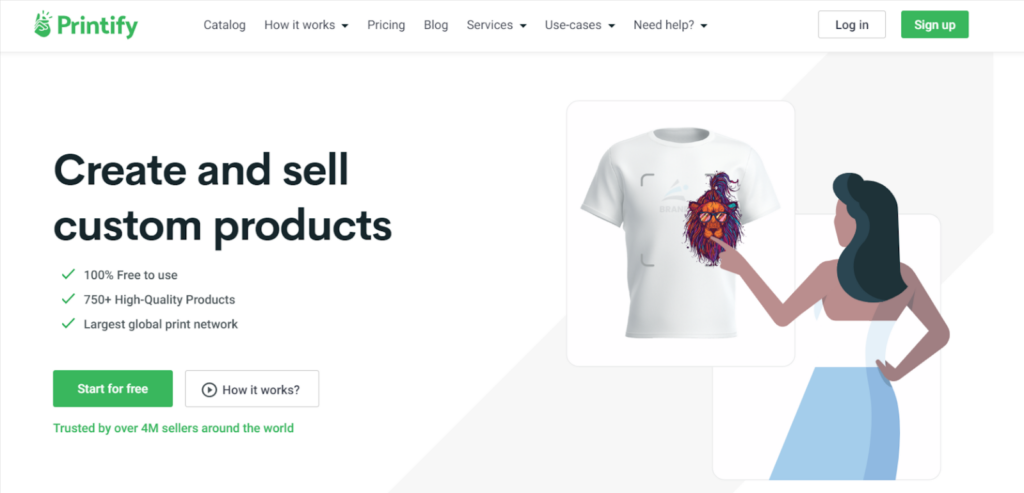
If you’ve got an artistic streak, did you know you can design T-shirts, mugs, hoodies, hats, phone cases, and a whole host of other stuff? Thanks to print on demand, anyone can design their own clothing and accessory line and sell it online.
What is print on demand? Well, it’s a company that manufactures your products to order. For example, when someone buys a T-shirt with your design on it, the print-on-demand company will make it and send it out to the customer.
This means you do not have to invest in inventory or expensive manufacturing equipment to sell this kind of product. You simply set the price for the product, and the print-on-demand company will take the cost of manufacturing out of the amount.
Print and Demand can either be sold on the manufacturer’s website, or you can sell on sites like Amazon and Etsy.
Pros and Cons of Print on Demand
Pros
- Allows you to sell apparel and products without investing in inventory
- Set your own prices for each item
- It’s a fun way to create income from your art
- T-shirts and apparel are always in-demand especially trending designs
Cons
- Researching trends and popular designs can be difficult
- The print-on-demand market is saturated, so you have to stand out
How to Get Started With Print on Demand
Before you start creating your designs, you must look at what is actually selling. This involves researching trends and popular designs to get a feel for what people want to buy.
You can do this by looking at Google Trends, social media, and Reddit and keeping abreast of news and current events.
Now you must create your designs. You can use paid design software, such as Photoshop or Procreate, or free design apps, such as GIMP and Canva. You can also use AI art generators to create designs.
Now, choose the print-on-demand manufacturer you wish to use:
- Printful: A large selection of products you can sell on other platforms
- Printify: A large selection of products you can sell on other platforms
- Redbubble: Massively popular, sell on its own platform
- Amazon Merch: Tough to get accepted, but once you do, you have the whole Amazon customer base at your fingertips
- Teespring: Create your own shop on the platform and advertise via social media
- Spreadshirt: Design your products and sell them on other platforms
- ShineOn: Design your products and sell them on other platforms
Where to sell your creations? Well, Etsy and eBay are the top two places to sell print-on-demand items.
Otherwise, pick a print-on-demand platform that also lets you sell your products there. Redbubble, for example.
6. Create YouTube Shorts or Facebook Reels
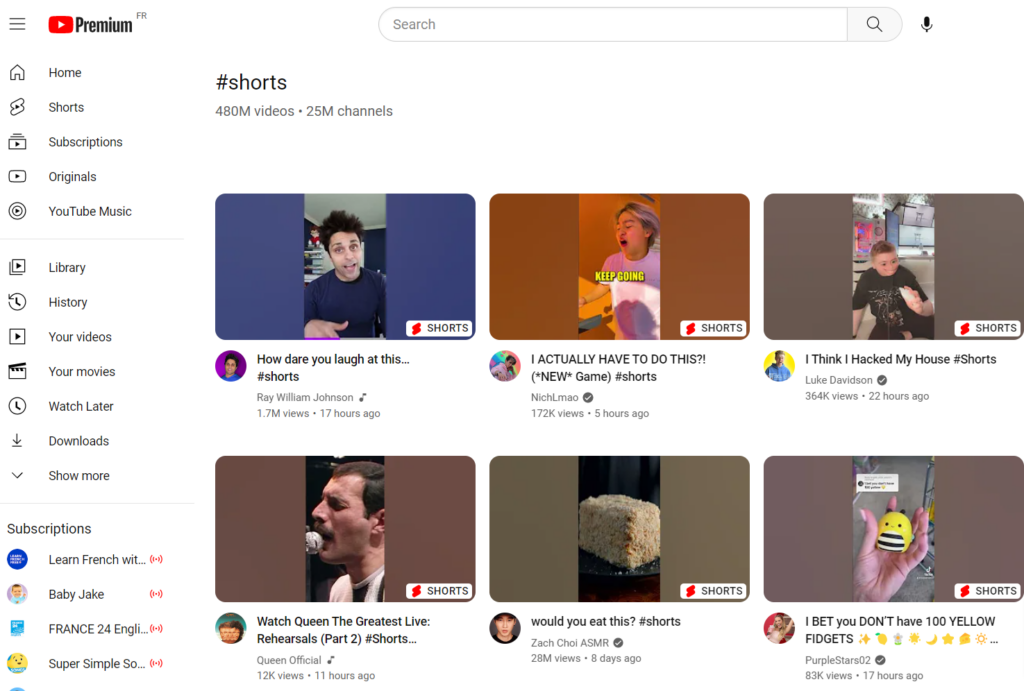
Move over long-form video content!
Thanks to the explosion of TikTok, social media behemoths are now scrabbling to keep up with the platform and are offering some decent incentives for people to create short-form video content. And it can be highly lucrative.
In 2021 and 2022, YouTube paid out $100 million to Shorts video creators, and it has just made its monetization qualification criteria easier for 2025.
Facebook is also jumping on the bandwagon and allows Reels creators to earn up to $35,000/month.
Pros and Cons of YouTube Shorts and Facebook Reels
Pros
- It can be hugely lucrative
- Requires no professional skills or equipment to perform
- It can be an enjoyable and creative way to make money
- You can use both platforms, along with TikTok and Instagram, to maximize your earnings
Cons
- You must meet the qualification criteria to gain revenue from your videos
- The work involved can be intense as you’re required to pump out a lot of content
How to Get Started With YouTube Shorts and Facebook Reels

Before you start recording, familiarize yourself with YouTube and Facebook’s policies and criteria for their short-form content. Not everything can be monetized, so you need to pick subjects that conform to their requirements.
Start making videos! Ensure they contain great quality and engaging content. Post regularly and often. It can be a lot of initial hard work to get to the monetization stage, but once you do, it’ll be worth the effort.
7. Become a Social Media Manager

If social media is your life, why not make it your profession? You can get paid really decent money to manage businesses’ social media accounts, but you need to prove that your posts can have an impact.
A social media manager will manage a business’s social accounts, post on their behalf, and drive engagement and increase followers. They will also develop social media marketing strategies and often be the point of contact via chat and messaging.
It helps greatly if you have built up a good following on your own accounts and can show how you can create engaging posts. If you don’t already have this, it can take a while to build up, so this isn’t a “get rich overnight” solution.
Pros and Cons of Social Media Management
Pros
- It’s a lucrative option. The average social media manager makes upwards of $50k per annum
- It’s a fun, creative job that can be quite varied
- Costs zero to build up a portfolio and get started
- If you excel at it, it can lead to other marketing roles and opportunities
Cons
- Getting a portfolio together can take a long time
- It may also take a while to land your first client as competition for this kind of work is fierce
How to Get Started With Social Media Management
First things first, you absolutely need to demonstrate that you can develop social media strategies that work and that your posts have an impact.
Either build up your own social media following or offer your services to one or two small businesses for free so you can build up theirs.
One tip is to decide which business niche to concentrate on rather than being a jack of all trades. If you can prove that you excel at social media management in a particular area, such as beauty, fashion, gardening, art, etc., you will have a much easier time landing a client.
Once you’ve got a decent chunk of work under your belt, you can start approaching clients you want to work for. Show them your portfolio and suggest providing a sample of work for free. If they go for it, you have a chance!
8. Provide Virtual Assistance (Become a VA)

If you love a spreadsheet or two and are highly organized, then becoming a virtual assistant could be right up your street. Virtual Assistance can be a wide variety of things and is, therefore, a versatile and interesting job.
For example, you could be a personal assistant to a CEO or Director, perform administrative duties for businesses, or if you have additional skills such as bookkeeping, this is also a useful skill to add to your portfolio.
Many organizations advertise for virtual assistants, so this can be an easy industry to break into plus, you can advertise yourself on the various freelancing platforms I mentioned earlier in the article.
Pros and Cons of Virtual Assistance
Pros
- It can be an easy field of work to break into
- Employers often advertise for roles saving you the trouble of hustling for clients
- There are many levels of virtual assistance, so you can find a role that suits your abilities
Cons
- Competition can be fierce, so you need to make yourself stand out
- It may not be as highly paid as some other options on this list
How to Get Started as a Virtual Assistant
It’s a wise idea to set up a website for yourself, showcasing your skills and the services you offer. If you have any previous experience with this kind of work, ask for a testimonial or review from the organization you worked for.
Next, check out job listings on sites like Indeed or Monster. You can also check out local job listing sites, and even CraigsList can turn up some interesting opportunities.
If you prefer to go down the freelance route, get yourself set up on sites like Upwork or sites like Fiverr and start looking for clients.
Finally, cold emails can be an option. Reach out to businesses and ask if they’re looking for any additional assistance. Don’t be pushy here – if you don’t get a reply, cross them off your list.
Summary – Best Low-Cost Online Business Ideas with High-Profit Margins
There are so many ways to make money online; it’s impossible to list them all in this article. However, the few I have mentioned have hopefully whet your appetite and ignited your enthusiasm to get started.
Don’t be fooled, though. All online businesses take a lot of work and effort to get off the ground. And while they can be highly lucrative, it can take a few months to get the ball rolling properly.
If you’re not sure what you want to do, why not try a few ideas out for size and see what fits?

